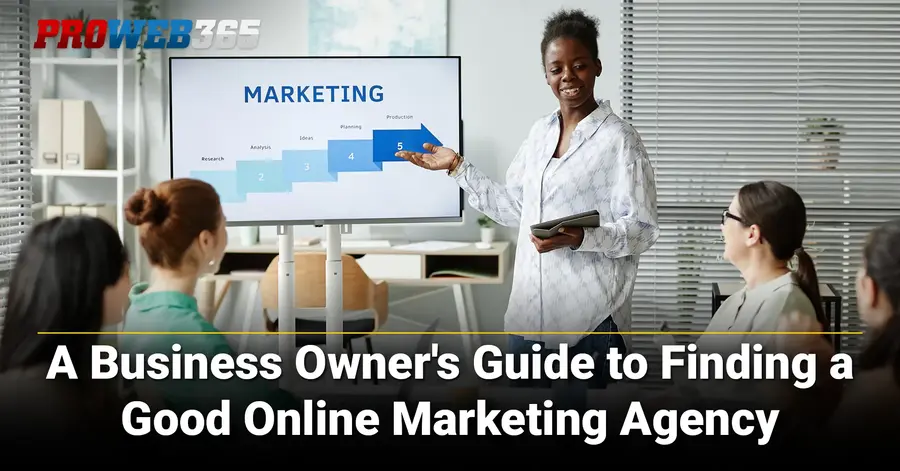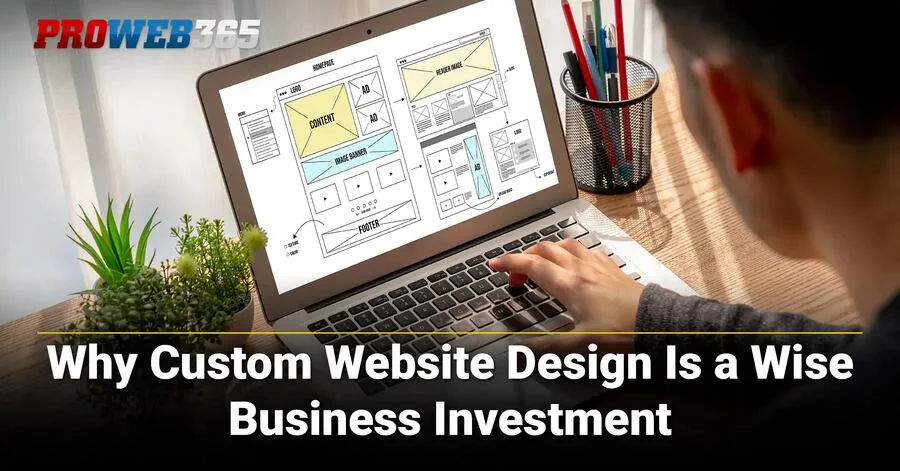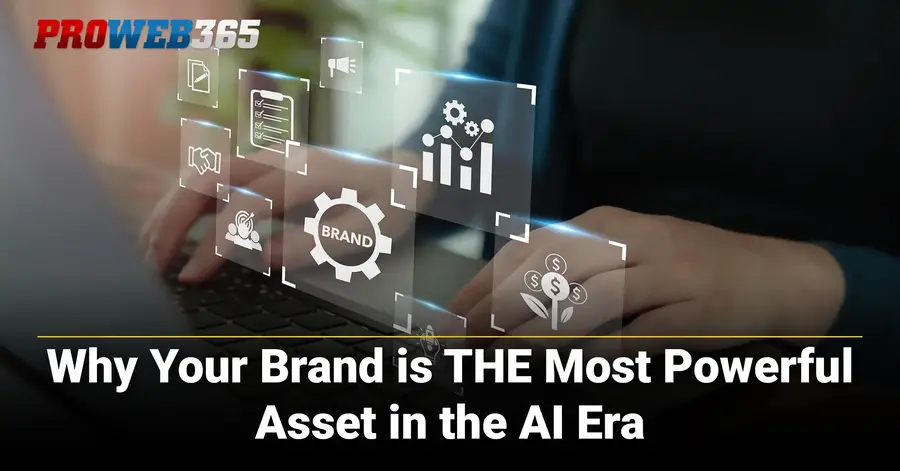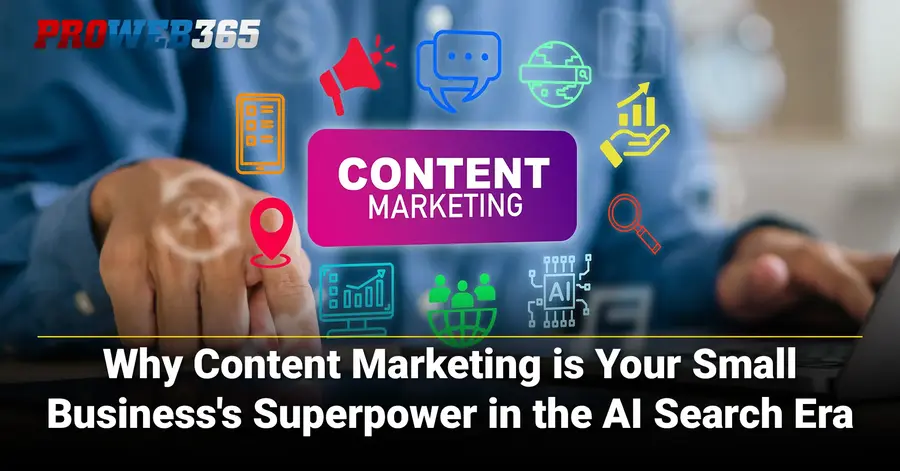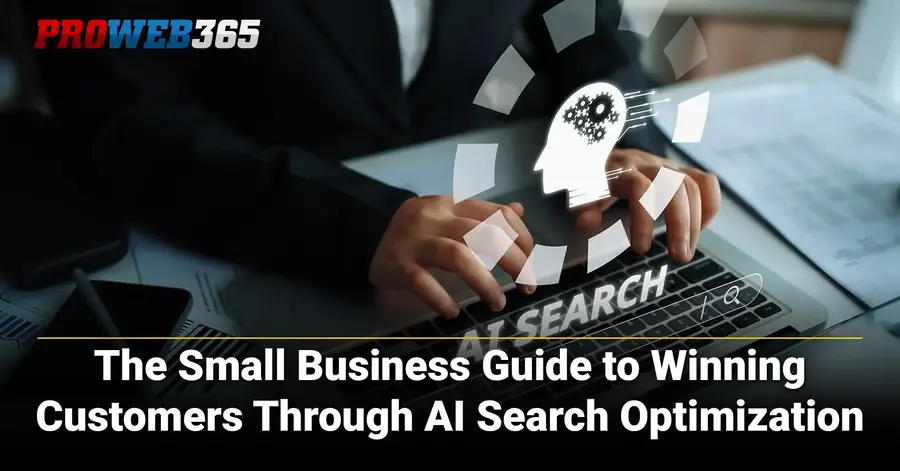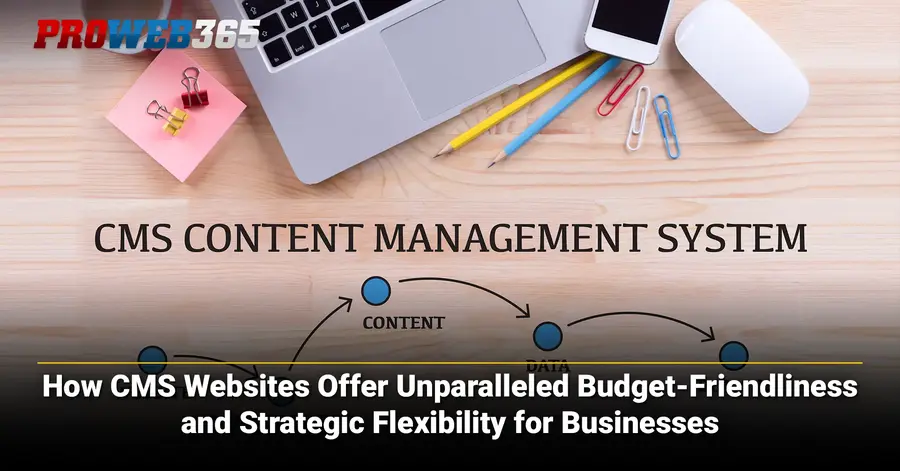A Strategic Guide to Selecting a Great Website Designer
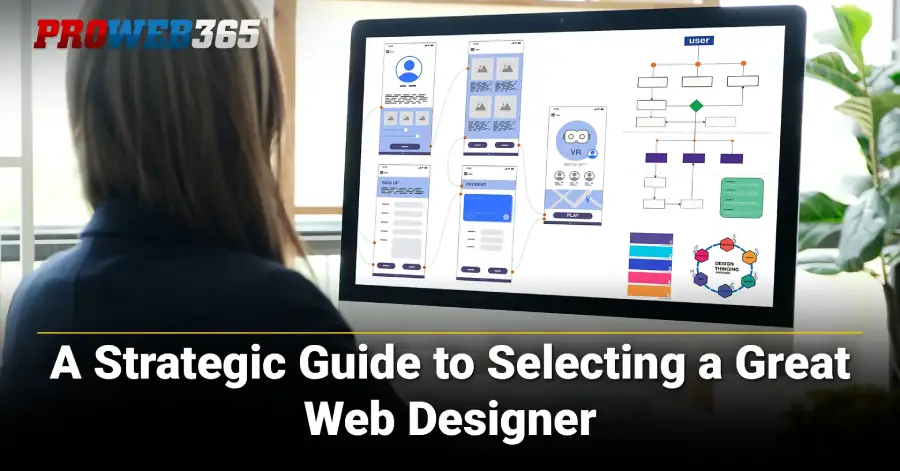
When you're a small to mid-size business owner or organizations, a website is more than just an online brochure; it's a foundational pillar for your identity, operations, and growth. In the AI era, a professional, functional, and user-friendly website is even more essential. It helps you build credibility, expand your reach, and serves as a powerful platform for sales, leads, and customer service.
To succeed, you need to navigate the web design process strategically, from defining your vision to selecting the right partner and protecting your investment. This guide provides a clear, six-phase roadmap to help you find a great web designer and create an online presence that delivers long-term value.
Key Takeaways
- A successful website project begins with clearly defining your website vision by outlining business objectives, your target audience, and key deliverables. This initial planning, known as "project scope" or "requirements gathering," helps prevent budget overruns and project delays.
- When searching for a designer, explore various options, from local talent to full-service agencies, and understand different pricing models like fixed-rate or hourly billing.
- When evaluating potential web designers, prioritize those with strong technical proficiency. Look for portfolios that showcase modern design standards, Core Web Vitals optimization, and mobile-first design, as these save on future costs and are crucial for SEO/GEO.
- Always use a comprehensive service agreement contract to protect your investment. Ensure the contract explicitly states that you own the copyright of the final design and the domain name upon full payment.
A Guide to Finding a Good Online Marketing Agency
To build a commanding online presence, especially as a mid-size business or organization, a variety of factors need to come together and be executed effectively. Understanding your audience and connecting with them requires a high-performing...Phase 1: Laying the Groundwork — Defining Your Website Vision
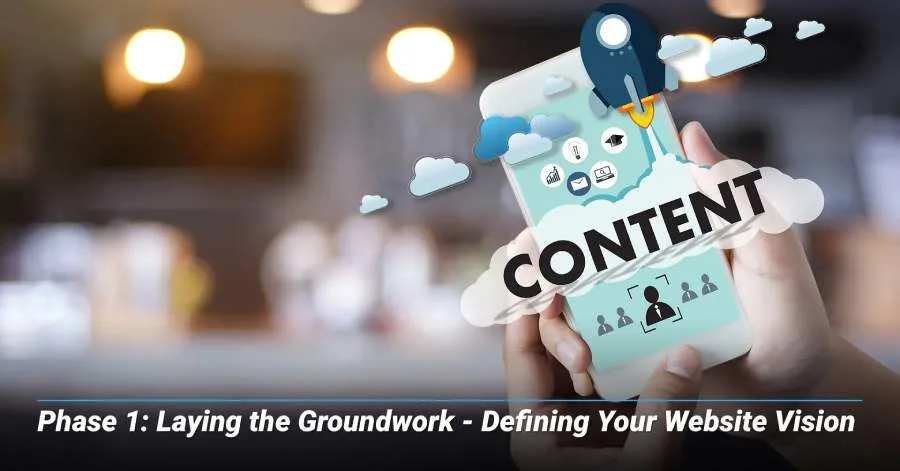
Before finding a web designer, outline and define your website's goals. This planning, known as "project scope" or "requirements gathering," ensures mutual understanding while preventing delays and budget issues.
Beyond features, understand the problems your website solves. Every expenditure must meet a tangible objective, whether it be sales, leads, or improved service. Look first to enhance features that address the primary issue. Doing so will allow more to be done with less, especially for those on a limited budget.
To define your vision:
Content Needs: What content (text, images) is required, and who provides it? (you or your website designer)
This checklist helps translate ideas into clear requirements, preventing scope creep and budget overruns. It safeguards your finances and aligns the product with objectives.
Planning Requirements Table
| Category | Key Considerations | Examples/Details |
|---|---|---|
| Business Objectives | What are the primary goals the website must achieve? | Increase online sales, generate leads, improve brand awareness, provide customer information, enhance customer service. |
| Target Audience | Who are the primary users? What are their characteristics? | Demographics, needs, preferences, behaviors, pain points. |
| Key Deliverables | What tangible outputs are expected from the project? | Website design, specific features/functionalities, content creation, third-party integrations (e.g., CRM, email marketing). |
| Functional Requirements | What specific actions must the website be able to perform? | User login, e-commerce checkout, contact forms, search functionality, user roles/permissions. |
| Content Requirements | What content is needed, and who is responsible for creating it? | Text content (who writes?), image/video assets (who provides?), content types (blog, product pages). |
| Design Guidelines | What is the desired aesthetic and brand representation? | Existing branding elements (logo, color palette, typography), desired layout, visual hierarchy, overall aesthetic. |
| Exclusions | What is explicitly not included in this phase of the project? | Specific features not included, ongoing content updates, advanced SEO beyond foundational setup. |
| Constraints | What are the project's limitations? | Total budget, project timeline, internal resource availability (e.g., for content creation, feedback). |
Why Custom Website Design is a Wise Business Investment
A strong online presence is essential for small and mid-size businesses (SMBs) today. A website acts as your virtual storefront, 24/7 sales representative, and above all, the first impression for potential customers. With rapid expansion...Phase 2: The Search Begins — Where to Find Your Web Design Partner
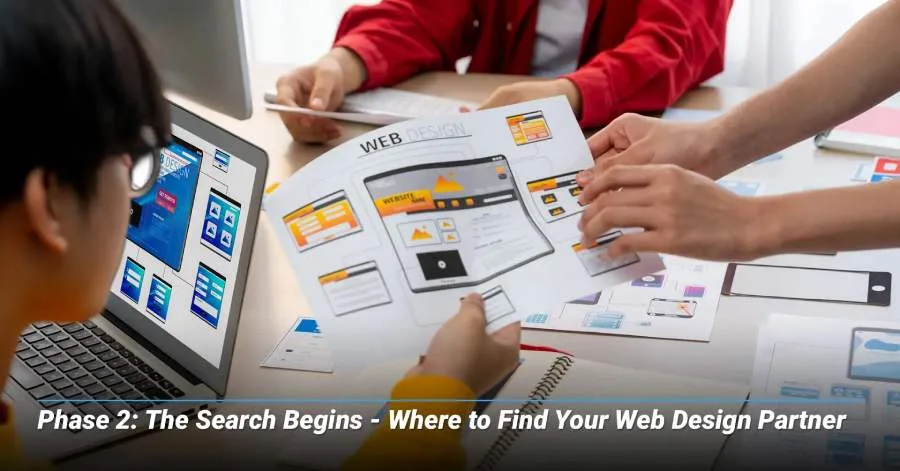
Full-Service Agencies: Likely beginning at a higher price point, full-service agencies offer comprehensive package solutions inclusive of web design, web hosting, online marketing (SEO), and ongoing website maintenance. This consolidation streamlines communication and support, reducing the complexities of coordinating multiple providers, which is particularly beneficial for mid-size organizations with ever-evolving needs.
Consider Local Talent: Engaging local designers or agencies can offer several advantages, with the most apparent being personalized attention. As they are local, the worker also has a stronger pulse of the area’s market. Effective communication and a normally freer schedule allow for efficient communication and potential for face-to-face meetings, which creates a personalized working relationship.
Pricing Models Comparison
| Pricing Model | Description | Pros | Cons | Best For |
|---|---|---|---|---|
| Hourly Rate | The designer charges for each hour spent on the project. | Flexible for evolving projects or small, undefined tasks. | Total cost can be unpredictable if scope is not tightly controlled or the project extends. | Minor updates, consulting, or projects with very fluid requirements where flexibility is key. |
| Project-Based (Fixed Rate ) | A single, upfront price for a clearly defined scope of work and deliverables. | Clear and predictable total cost, making budgeting straightforward. Easy to compare offers. | Less flexible for changes outside the initially agreed-upon scope; requires detailed planning upfront. | Projects with well-defined requirements, where the exact needs are known. |
| Monthly Subscription/Retainer | A recurring monthly fee for ongoing design services, maintenance, updates, or strategic support. | Provides consistent support and updates, predictable monthly expense, designer acts as a long-term partner. | Requires a long-term commitment; may be more expensive for simple, one-off projects. | Organizations needing continuous website evolution, regular content updates, or ongoing marketing support. |
| Custom Quote | A tailored price for unique or complex projects that do not fit standard packages. | The solution is highly customized to specific, intricate needs. | Can be the highest cost option; requires detailed negotiation and understanding of complex requirements. | Highly specialized websites with unique functionalities or integrations. |
Current pricing trends for 2025 show that setup fees for basic websites have increased significantly. Most small business websites now are within the $500-$10,000 range while custom business websites or online stores go anywhere from $10,000 to $50,000+.
Why Your Brand is THE Most Powerful Asset in the AI Era
As AI begins to reshape browsing, so too is the digital landscape for small to mid-size businesses (SMBs). To go along with the tide, investing in brand strength is crucial for customer acquisition and sustainable...Phase 3: Smart Selection — Evaluating Potential Web Designers

After compiling a list of designers, thoroughly evaluate their capabilities, reliability, and suitability beyond first impressions.
Client testimonials are the best way to understand how they go about solving issues. Take into account specific results or challenges addressed, beyond just compliments, for a holistic idea of how this designer delivers value relevant to your organization.
Technical proficiency saves long-term costs. A slow or hard-to-find site is a wasted investment. Designers building with performance and Core Web Vitals optimization from the start save future optimization and marketing costs, adding long-term value. Google's Core Web Vitals (Largest Contentful Paint, Interaction to Next Paint, and Cumulative Layout Shift) are now critical ranking factors, with ideal scores being LCP under 2.5 seconds, INP under 200 milliseconds, and CLS under 0.1.
Technical Expertise Requirements
A quality site needs optimal performance. Insist on:
- Browser Compatibility: Consistent display across all major browsers.
- Modern Standards: Ensure use of current HTML5 and CSS3 standards. Deprecated HTML tags like <center>, <font>, <marquee>, and <blink> should be avoided and replaced with modern CSS approaches.
- Mobile-First Design: With Google's complete transition to mobile-first indexing as of July 2024, websites must be fully accessible and optimized for mobile devices to be indexed and ranked.
Portfolio Evaluation Criteria
| Evaluation Criterion | Checkpoints for Assessment |
|---|---|
| Industry Experience | Has the designer worked with organizations in your sector? Do they have examples of relevant site types (e.g., e-commerce, B2B, service-based)? |
| Design Versatility | Do the websites in their portfolio show varied visual styles? Are designs custom or heavily customized, or are they only cut-and-paste templates? |
| Functionality & User Experience (UX) | Are sites easy to navigate? Are interactive elements clear and engaging? Do calls to action (CTAs) stand out? |
| Target Audience Alignment | Do designs reflect the preferences and expectations of your target audience? Are colors, fonts, and imagery appropriate? |
| Business Objective Alignment | Do designs guide users toward meaningful actions (e.g., sales, lead generation, inquiries)? Are the key elements prominently displayed? |
| Before & After Comparisons (if applicable) | Do redesigns show clear visual and functional improvements? Are performance metrics (e.g., increased conversions, lower bounce rates) provided? |
| Creativity & Innovation | Is there a purposeful use of modern design trends? Are there custom-built solutions tailored to specific organizational needs? |
| Brand Consistency | Are branding elements (logo, colors, typography) consistent across the site? Does the design align with the overall brand identity? |
| Readability & Polish | Is there a good balance of whitespace? Is the text easy to read? Does the overall style feel professional and purposeful? |
Why Content Marketing is Your Small Business's Superpower in the AI Search Era
Artificial intelligence (AI) is completely changing how search engines work, shifting the focus from simple keywords to understanding what people really want to find. For small businesses, this new digital landscape is a massive opportunity....Phase 4: Avoiding Pitfalls — Common Mistakes and How to Sidestep Them
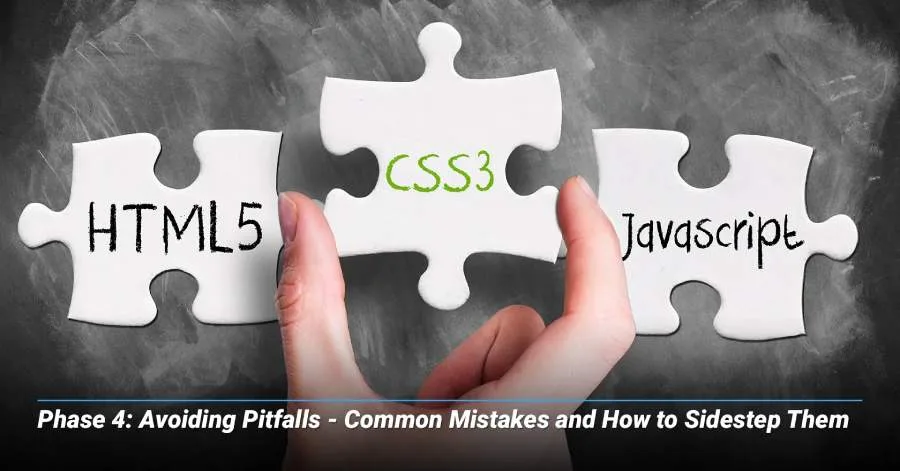
Even with the best intentions, business owners and organizations are prone to making mistakes when choosing who to work with. Knowing these pitfalls is key to stepping over them and ensuring a positive return on investment.
Outdated technology creates long-term problems. Flash has been discontinued by Adobe since December 2020 and is no longer supported by any major browsers (Chrome, Firefox). Old HTML or deprecated tags mean costly redesigns and pixelated mobile display, quickly losing audience interest and potential clients. Templates dilute your brand as they lead to a lack of individuality that viewers would normally be able to associate you with. These choices lead to "technical debt" and "brand dilution," requiring significant future investment to fix.
Hiring friends or family, though seemingly a more pleasant experience and likely cheaper, often lacks professionalism and accountability. Informal arrangements typically lead to unfinished projects, unmet expectations, and strained relationships. A professional, documented relationship is best to have on file and crucial for success.
Key Guidelines
- Reject Generic Templates: Lacking a unique brand identity. Custom design is vital for differentiation and organizational goals. While templates can be starting points, they should be significantly customized to reflect your individuality.
- Be Wary of Friends/Family: Informal projects often fail or are delayed. Research all designers thoroughly.
- Demand a Contract: Crucially, ensure a service agreement explicitly states your ownership of the website design and domain name. Don't start without it.
Common Mistakes to Avoid
| Common Web Design Mistake | Why it is a Mistake | How to Avoid It |
|---|---|---|
| 1. Choosing the Cheapest Option | Often leads to poor quality, hidden costs, and a designer who may not fully understand the project, costing more in the long run. | Prioritize value and quality over the lowest price. Consider payment plans or saving up for a professional designer. |
| 2. Using Outdated Technology (Flash, deprecated HTML) | Flash is completely discontinued (2020), deprecated HTML tags create accessibility issues and poor mobile performance. | Insist on modern HTML5/CSS3 standards, mobile-responsive design, and Core Web Vitals optimization. |
| 3. Relying on Generic Templates | Fails to create a unique online identity, is difficult to distinguish from competitors, and does not effectively differentiate the business. | Invest in a custom-designed website or ensure any chosen template can be significantly customized to reflect a unique brand identity. |
| 4. Hiring Friends/Family/Acquaintances | Often leads to unfinished projects, unmet expectations, and can strain personal relationships due to a lack of formal structure. | Conduct thorough research and due diligence on anyone considered, even referrals. Prioritize professionalism and clear contracts. |
| 5. Lack of a Service Agreement Contract | Puts ownership of the domain name and website design at risk, potentially allowing the provider to hold assets hostage. | Always demand a comprehensive contract that explicitly states ownership of the copyright of the website design and domain name. |
| 6. Not Verifying Provider Legitimacy | Increases the risk of dealing with disreputable companies that offer low-quality work, lack accountability, and provide poor support. | Ensure the web designer operates as a recognized business entity (e.g., LLC, Inc.). Check their business registration. |
The Small Business Guide to Winning Customers Through AI Search Optimization
The internet is constantly evolving, and AI in search engines is being used to find business for customers. For small to mid-size business owners, understanding and adapting to these technological advances is crucial for growth....Phase 5: Protecting Your Investment — The Non-Negotiable Contract
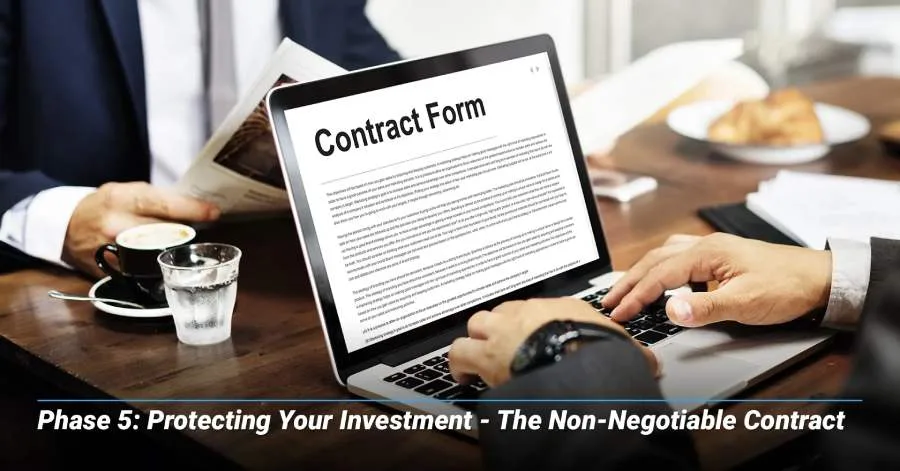
Furthermore, a website is not a monolithic entity but is composed of separate elements coming together to work in harmony, including design, content, images, underlying code, and hyperlinking. Understanding this level of ownership will protect you in the long run. Setting up a contract to prevent providers from holding domain names hostage ensures clients receive full control and rights to the domain once the work has been completed. Failing to do so opens the door to future legal battles, unexpected licensing fees, or the inability to modify specific elements, thereby undermining the long-term value and control of the investment. The contract must secure every part of your site.
To safeguard your interests:
Crucial Contract Clauses
Include:
- Scope of Work: Clear deliverables and exclusions.
- Client Responsibilities: What you provide and when.
- Dispute Resolution: How disagreements are handled.
Essential Contract Elements
| Essential Web Design Contract Clause | Key Detail for Small Businesses |
|---|---|
| Scope of Work | Clear definition of deliverables, technical specifications, and explicit exclusions to prevent "scope creep." |
| Payment Terms | Detailed schedule of payments (e.g., deposit, milestones, final), due dates, and late fees. |
| Intellectual Property (IP) Ownership | Explicit statement that the client owns the copyright of the final design, domain name, and all website elements upon full payment. Include "Work for Hire" language. |
| Client Responsibilities | Clear list of materials (content, images) and feedback required from the client, with hard deadlines. |
| Revisions and Change Requests | Number of included revision rounds and the process/cost for any additional changes outside the agreed scope. |
| Timeline and Milestones | Project start and end dates, with key milestones for each phase of development. |
| Confidentiality | Agreement by both parties to maintain the confidentiality of any proprietary business information shared. |
| Termination Clause | Conditions under which either party can terminate the agreement (e.g., non-payment, breach of contract), and the consequences. |
| Dispute Resolution | Specifies how disagreements will be handled (e.g., mediation, arbitration) and the governing law/jurisdiction. |
| Third-Party Costs & Hosting | Clarification of who is responsible for ongoing costs like domain name registration, web hosting, and third-party plugins/licenses. |
| Limitation of Liability/Disclaimer of Warranties | Protects both parties from excessive claims and clarifies the designer's responsibility regarding specific business results (e.g., increased sales). |
How CMS Websites Offer Budget-Friendliness and Strategic Flexibility for Businesses
Content Management Systems (CMS) empower small to mid-size businesses (SMBs) to build and grow their online presence affordably and efficiently. To better understand, a report on how CMS platforms offer cost-effectiveness and remarkable adaptability, enabling...Phase 6: Beyond Launch — Maintaining and Growing Your Online Presence
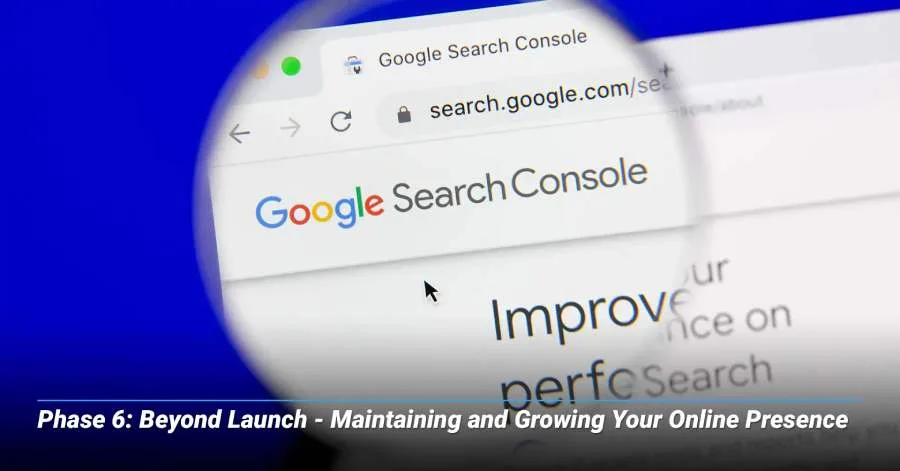
Launching your website is only the beginning, not the end. Continuing to maintain and grow both reactively and proactively is the key to keeping it successful.
Foundational SEO/GEO is a critical future marketing investment. Effective SEO/GEO takes months to see results, so your website must be built with performance and SEO/GEO optimization from Day 1. This includes Core Web Vitals optimization, proper heading structures, image optimization, and mobile-first design. The latest SEO/GEO best practices for 2025 emphasize user experience, with Google's algorithm prioritizing sites that provide excellent Core Web Vitals scores and mobile accessibility.
Modern Web Standards
- Security and SSL Requirements: Modern websites must include SSL/TLS certificates. SSL certificates are essential for HTTPS, which is required for SEO ranking and user trust. Features such as SSL certificates, robust firewalls, and regular security updates are now standard offerings from reputable hosting providers.
- Modern Hosting Standards: Choose hosting providers that offer cloud-based solutions, robust security measures, high uptime guarantees, and scalable infrastructure. Modern hosting should include automated backups, CDN integration, and performance optimization tools.
Conclusion: Your Path to Online Success
A strong online presence is vital for success for small to mid-size businesses and organizations. Finding the right web design partner is achievable with a strategic, informed approach. By following the updated guidelines, which focus on modern web standards, mobile-first design, Core Web Vitals optimization, and proper legal protections, you can make it easier for your investment to deliver long-term value and competitive advantage in the evolving digital landscape.
The key is to prioritize technical proficiency, demand modern standards, secure proper ownership rights, and plan for ongoing optimization and compliance with current web accessibility and SEO/GEO requirements. With these foundations in place, your website will serve as a powerful asset for growth and success in the modern world.
Best Tips for Startups to Win in the Age of AI Search Engine Marketing
The digital marketplace is constantly improving, with tech advancements and shifting consumer behaviors being the driving forces behind it. Businesses that fail to adapt their marketing strategies are left behind and forced to claw their...Frequently Asked Questions about Selecting a Great Web Designer
1. Why does my business need a website?
A website is vital for your digital strategy, helping customers find you, build trust, and expand reach. It boosts visibility, branding, and attracts new leads.
2. How much does it cost to build and maintain a website?
Cost varies by design complexity, features (e.g., e-commerce, booking), and maintenance. Simple sites cost less. Maintenance includes updates and security.
3. How long does it take to build a website?
Timeline depends on size, complexity, customization, and resources. Simple sites take weeks; complex ones, months.
4. Will my website be mobile-friendly?
Yes, modern websites must be mobile-responsive, adapting to all screen sizes. This is crucial as most traffic is mobile. A good designer ensures this.
5. Do I own the site and its contents after it goes live?
Your contract must explicitly state that you own the site and its content upon completion (not the CMS platform the site was built on). Under U.S. copyright law, the creator owns copyright unless transferred in writing. Ensure your contract confirms ownership of the design, content, and domain after the final payment is made.

Phong Nguyen
Phong brings the perfect combination of business acumen and technical expertise to digital marketing. Armed with a Bachelor of Arts degree from St. Olaf College, a master’s in business administration in Marketing from the University of St. Thomas, and SEO/GEO from “The School of Hard Knocks,” Phong founded ProWeb365.com in 2009 to help Minnesota businesses and non-profit organizations succeed online.
For over 15 years, Phong and his team’s strategic approach has combined data-driven marketing with conversion-focused design, delivering measurable results that directly impact his clients’ bottom line. Are you ready to experience what innovative digital marketing can do for your business in the age of AI search engines? Contact Us today!


